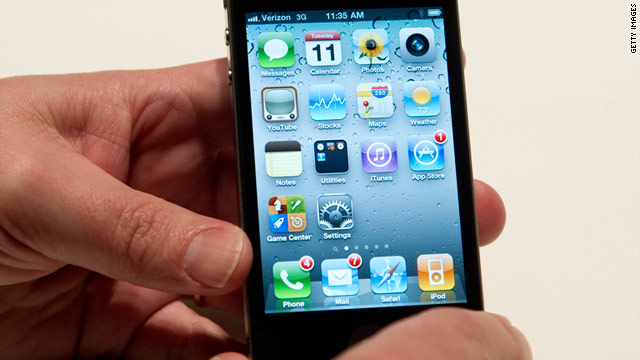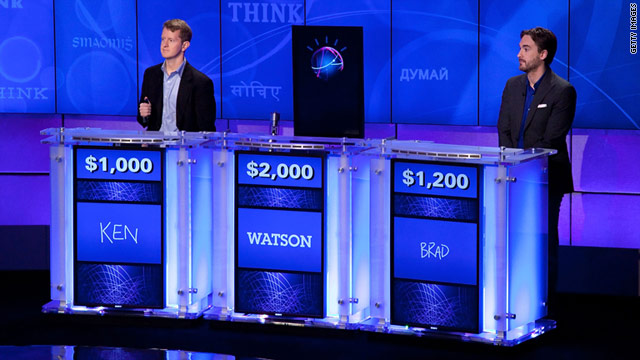by
 The Sony Ericsson booth at Mobile World Congress is much like any other at the week-long event in Barcelona: neon lighting, shag carpeting and racks of phones on large plastic stands. But most of the phones are looking distinctly unloved. Just one of their brethren is getting all the attention — the Xperia Play, informally (and more appropriately) known as the PlayStation Phone.
The Sony Ericsson booth at Mobile World Congress is much like any other at the week-long event in Barcelona: neon lighting, shag carpeting and racks of phones on large plastic stands. But most of the phones are looking distinctly unloved. Just one of their brethren is getting all the attention — the Xperia Play, informally (and more appropriately) known as the PlayStation Phone.
The Xperia Play is an Android phone where the slide-out keyboard has been replaced by slide-out PlayStation controls for easy gaming. Yesterday, Sony announced the Xperia Play would be available sometime this spring worldwide; in the U.S. it will be carried on Verizon. Some 50 games, many of them classics from the PlayStation One, will be ready at launch, according to Sony Ericcson. You’ll be able to buy them through a virtual PlayStation store, accessed via the Android Marketplace.
I had the opportunity to take the Xperia Play for a test run, and I was pleasantly surprised by how enjoyable I found it. I’ve owned several PlayStations in my lifetime, but I’ve never been much of a fan of the platform. I had zero interest in the PSP, the pricey portable gaming platform that has been losing out to the more innovative (and cheaper) Nintendo DS. Neither seemed like devices I had room to carry around. I’m not alone: In December, a report by research firm Interpret showed a significant rise in smartphone gaming and a decline in PSP/DS use.
But the Xperia Play isn’t merely a PSP with phone functionality added on. It has been redesigned from the ground up. On the surface, it looks and acts like a respectable, regular touchscreen phone running Android 2.3, or Gingerbread. It wouldn’t immediately tip your boss off to your status as a gamer. Wait until the boss goes out of the room, however, and you can slide out the panel with the game buttons. This has triggers on the back, and a pair of touchpads that act as joysticks.
I found the touchpads actually easier to handle than joysticks or the D-pad (arrow keys). Moreover, I was surprised to learn, the screen itself remains touch-sensitive when in game mode. This means that games for the Xperia will have more kinds of input at their disposal than a Sony PSP, a Nintendo DS or an iPhone. For that matter it has more potential inputs than a PlayStation3, or any other console.
Of course, whether all those inputs are used in games depends on game developers. Only a few of the launch games I sampled — which included FIFA 10, Asphalt 6 and Bruce Lee — were optimized for the touchpad joysticks. Then again, it took iPhone game developers a while to catch on to all the possibilities inherent in that device, and now you’d be hard-pressed to find an iPhone game that doesn’t use the accelerometer. The Xperia Play designers deliberately left out an accelerometer, convinced that gamers don’t want to swoop their phone around the room while playing. Perhaps that was one input too many.
 The Sony Ericsson booth at Mobile World Congress is much like any other at the week-long event in Barcelona: neon lighting, shag carpeting and racks of phones on large plastic stands. But most of the phones are looking distinctly unloved. Just one of their brethren is getting all the attention — the Xperia Play, informally (and more appropriately) known as the PlayStation Phone.
The Sony Ericsson booth at Mobile World Congress is much like any other at the week-long event in Barcelona: neon lighting, shag carpeting and racks of phones on large plastic stands. But most of the phones are looking distinctly unloved. Just one of their brethren is getting all the attention — the Xperia Play, informally (and more appropriately) known as the PlayStation Phone.The Xperia Play is an Android phone where the slide-out keyboard has been replaced by slide-out PlayStation controls for easy gaming. Yesterday, Sony announced the Xperia Play would be available sometime this spring worldwide; in the U.S. it will be carried on Verizon. Some 50 games, many of them classics from the PlayStation One, will be ready at launch, according to Sony Ericcson. You’ll be able to buy them through a virtual PlayStation store, accessed via the Android Marketplace.
I had the opportunity to take the Xperia Play for a test run, and I was pleasantly surprised by how enjoyable I found it. I’ve owned several PlayStations in my lifetime, but I’ve never been much of a fan of the platform. I had zero interest in the PSP, the pricey portable gaming platform that has been losing out to the more innovative (and cheaper) Nintendo DS. Neither seemed like devices I had room to carry around. I’m not alone: In December, a report by research firm Interpret showed a significant rise in smartphone gaming and a decline in PSP/DS use.
But the Xperia Play isn’t merely a PSP with phone functionality added on. It has been redesigned from the ground up. On the surface, it looks and acts like a respectable, regular touchscreen phone running Android 2.3, or Gingerbread. It wouldn’t immediately tip your boss off to your status as a gamer. Wait until the boss goes out of the room, however, and you can slide out the panel with the game buttons. This has triggers on the back, and a pair of touchpads that act as joysticks.
I found the touchpads actually easier to handle than joysticks or the D-pad (arrow keys). Moreover, I was surprised to learn, the screen itself remains touch-sensitive when in game mode. This means that games for the Xperia will have more kinds of input at their disposal than a Sony PSP, a Nintendo DS or an iPhone. For that matter it has more potential inputs than a PlayStation3, or any other console.
Of course, whether all those inputs are used in games depends on game developers. Only a few of the launch games I sampled — which included FIFA 10, Asphalt 6 and Bruce Lee — were optimized for the touchpad joysticks. Then again, it took iPhone game developers a while to catch on to all the possibilities inherent in that device, and now you’d be hard-pressed to find an iPhone game that doesn’t use the accelerometer. The Xperia Play designers deliberately left out an accelerometer, convinced that gamers don’t want to swoop their phone around the room while playing. Perhaps that was one input too many.


































